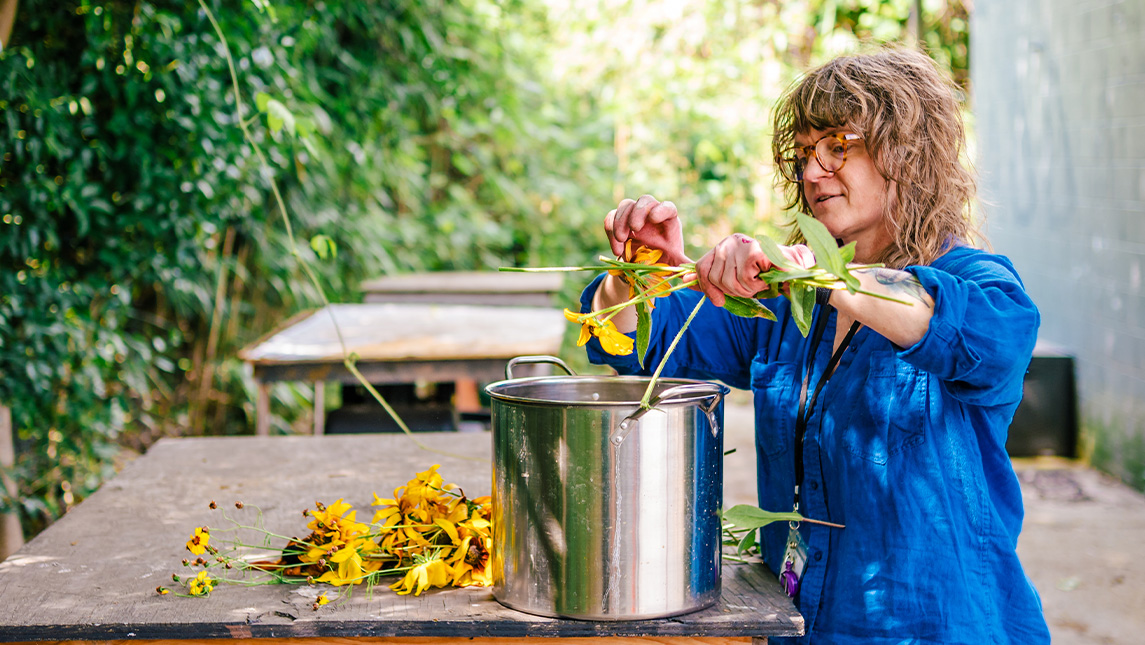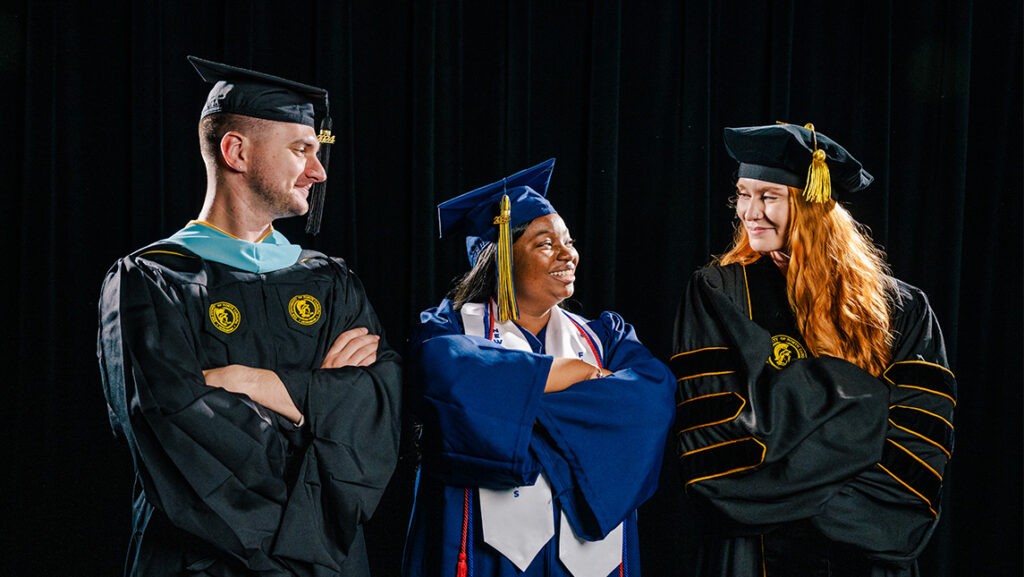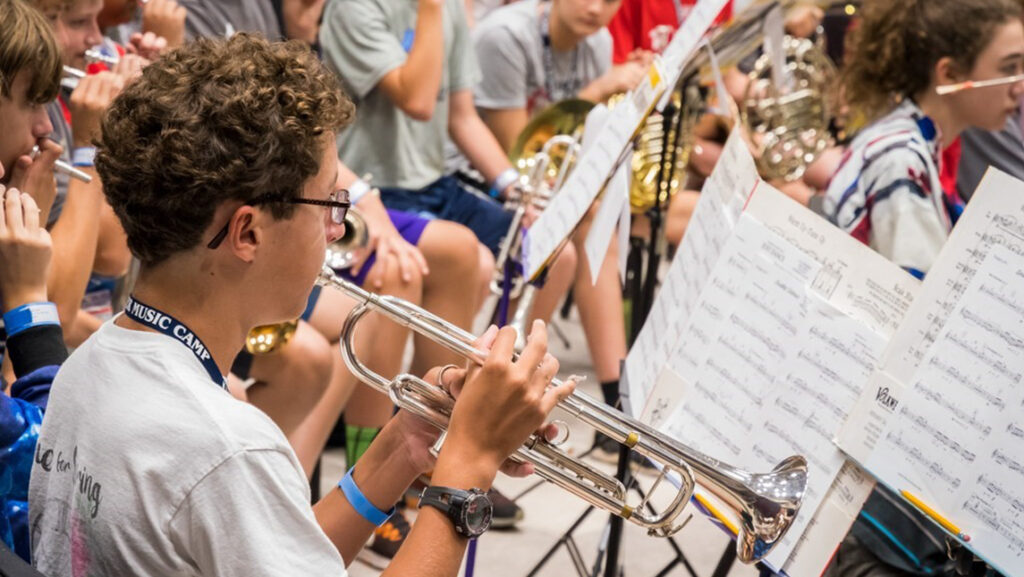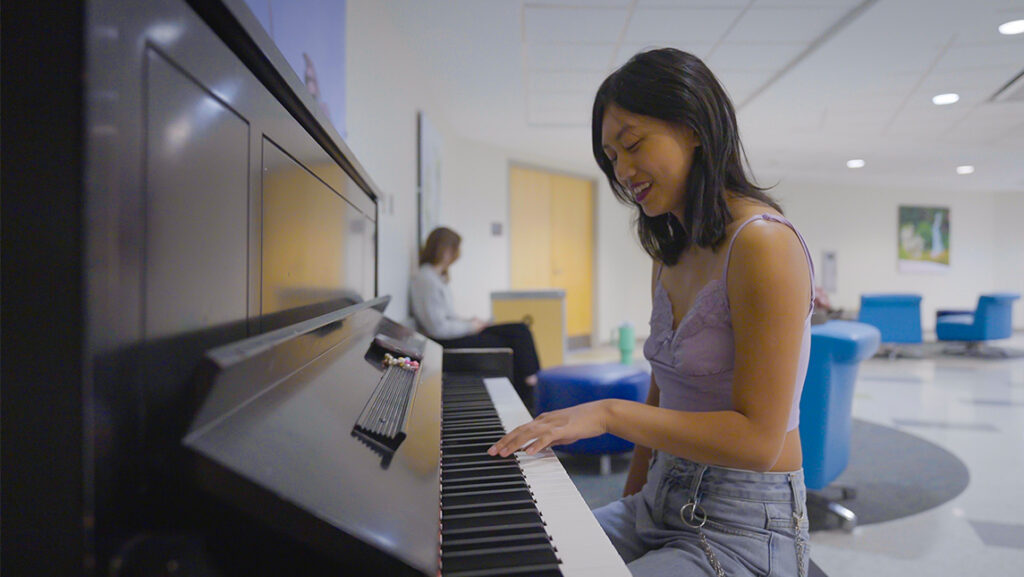Nature is full of color and UNC Greensboro lecturer Tara Webb is passionate about using those colors in her productions.
Webb, a lecturer in costume technology in UNCG’s School of Theatre, makes clothing dyes with natural materials and food waste.
“During the industrial revolution there were chemical inventions that created all the amazing colors we wear on our clothing now,” says Webb. “But prior to those inventions, the color in clothing came from plants, minerals, bugs, even shellfish.”
SUSTAINABLE FASHION
Raised in an artistic household, Webb’s mother was a weaver, and their home was always full of plant materials, dye pots, and wools. She became interested in costume design in college and then later natural dyes.
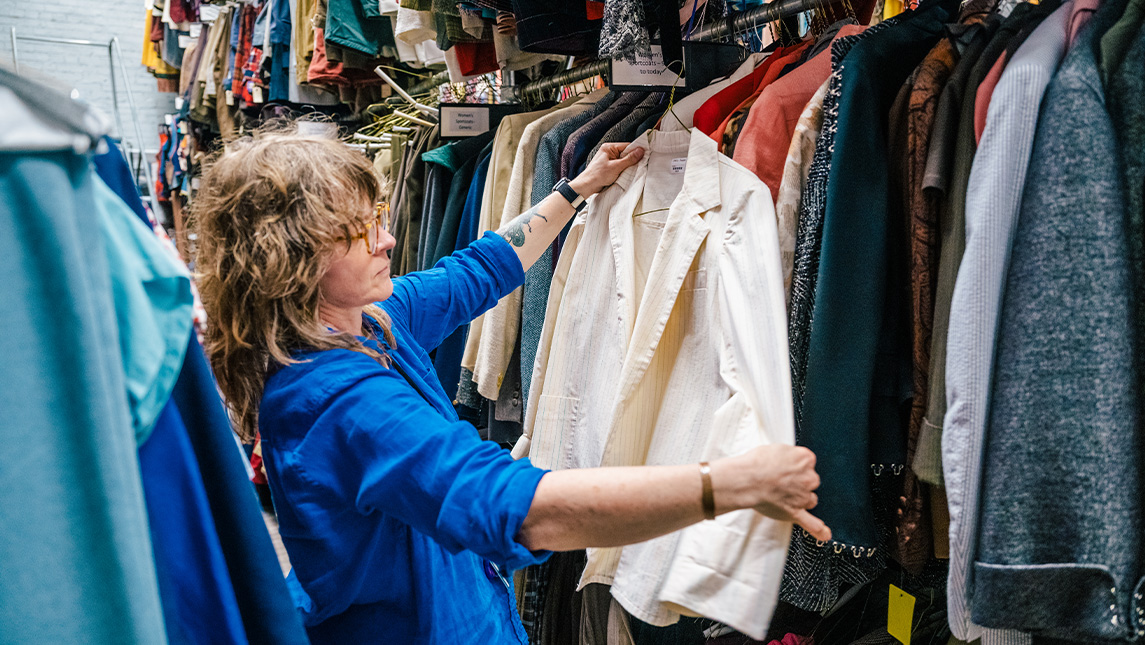
“I started learning about natural dyes and how we could use them in costumes for the theater,” says Webb. “Then, thinking about this crossover into sustainability, which I was really involved with in my last job, I immediately jumped on the opportunity at UNCG.”
Webb was the 2021-22 UNCG Sustainability Faculty Fellow (SFF). The program, through the UNCG Sustainability Council, promotes collaboration among scholarly disciplines to encourage the integration of sustainability in research, teaching, and service across campus and in the local community.
Fellows work on clearly specified projects that may include, but are not limited to, extra-curricular campus programs, curriculum activities (including team-taught and individual courses), and innovative research projects or collaborations. The Sustainability Faculty Fellows positions are for one-year terms and are renewable through re-application.
COLOR IN EVERYTHING
As part of Webb’s fellowship, she offered educational opportunities including the development of a local dye color pigment map to identify non-native plants, locally foraged resources, and food waste. She also created a mini-dye garden on State Street to grow flowers for natural dye use.
“Creating natural dyes is a slow process,” says Webb. “For the first year of my fellowship, I was going around campus and looking for things that would make color. One of the big ones on our campus is oak trees and oak makes a beautiful brown.”
Other natural colors include goldenrod for yellow, mulberry trees for purples and pinks, and black eyed Susans for greens and yellows.
“Everything makes a color, but some make better colors than others,” Webb explains. “In the chemical process, some things work, and some things don’t. Part of my interest in researching is finding what those things are.”
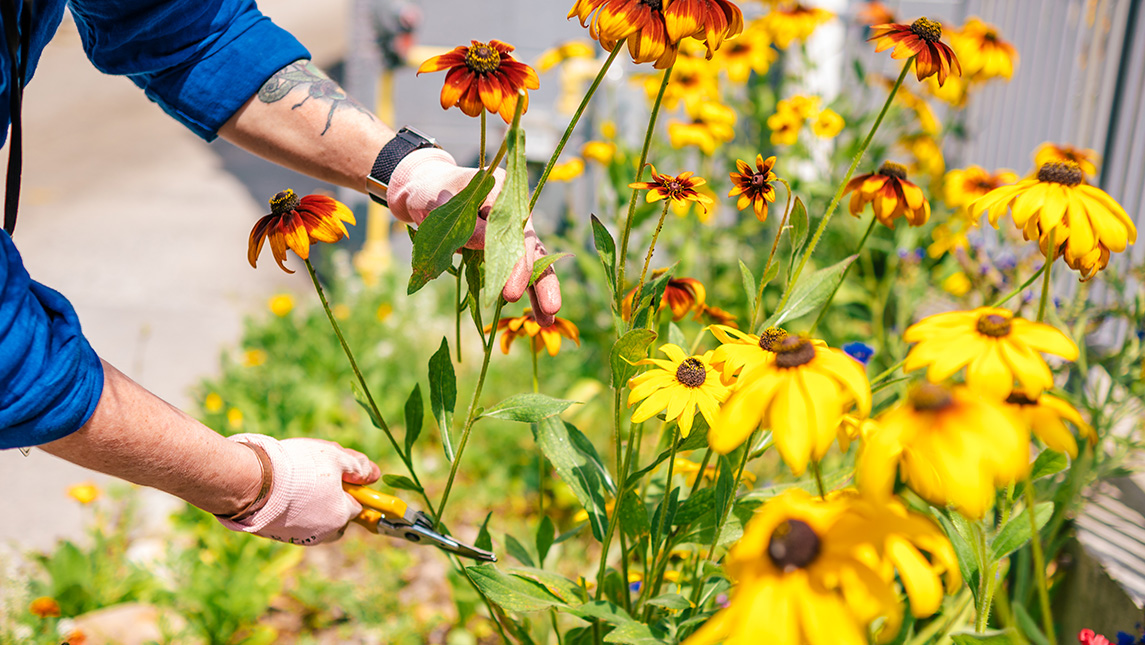
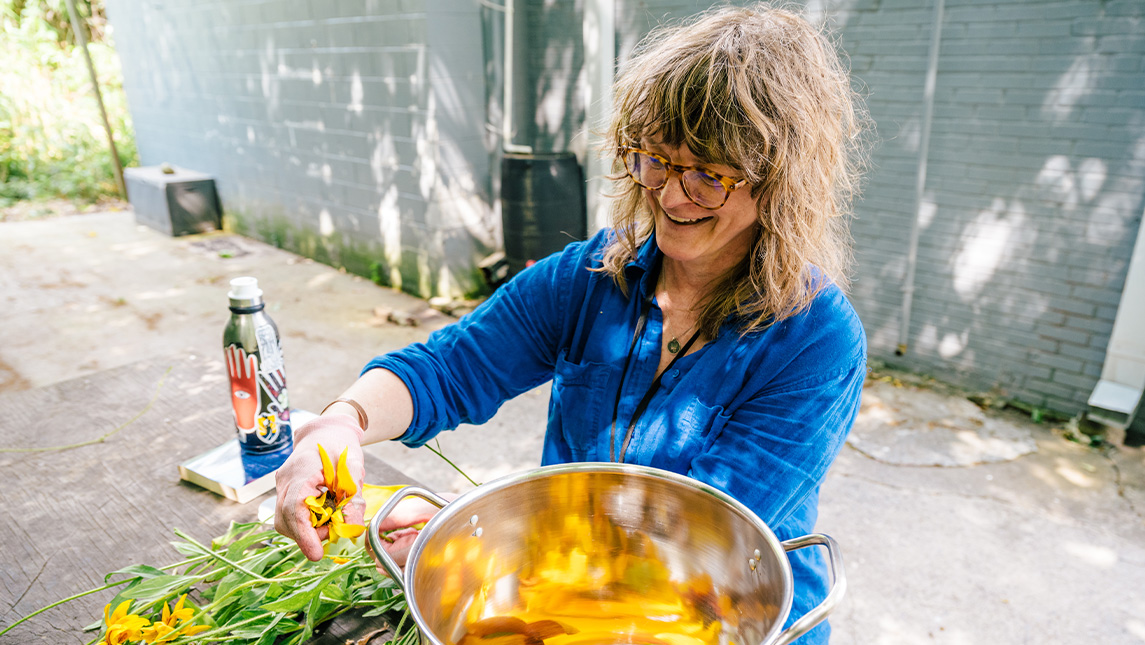
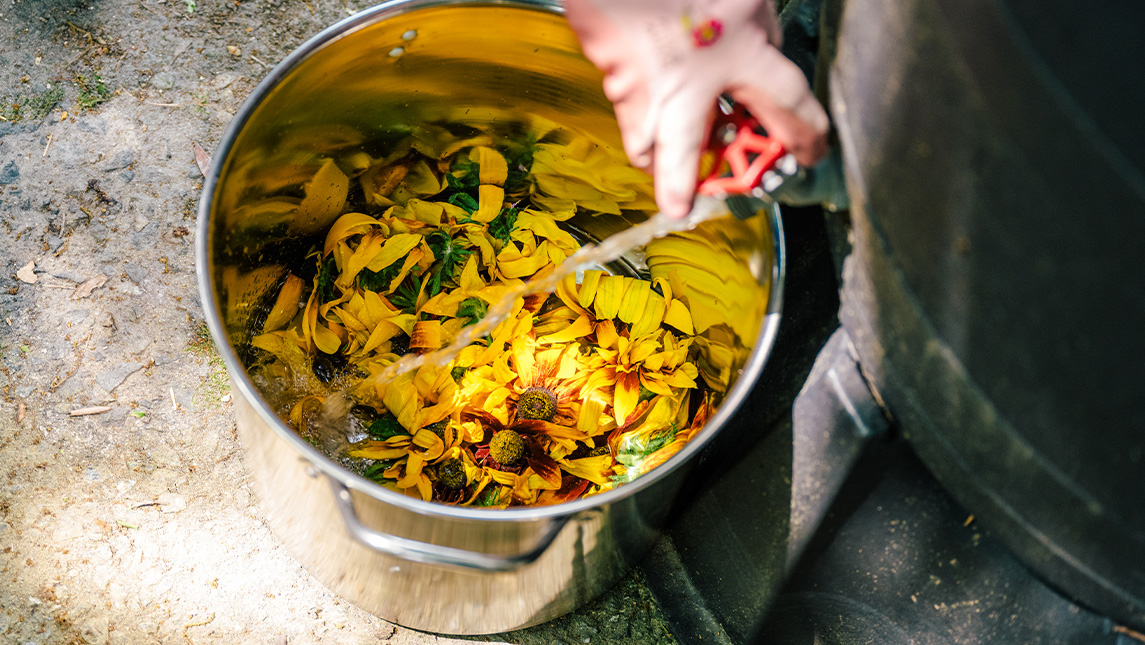
ANOTHER PERSON’S TRASH
The old saying that “another person’s trash is one person’s treasure,” is especially true for Webb’s work. Colors can be found in what you throw out every day.
“Food scraps are an accessible way for people to get into natural dyes,” says Webb. “There’s some surprising foods that are available. It’s also easy when you’re teaching kids because food scraps are non-toxic, so it’s a much easier access point.”
Avocados can make red and pink, black beans make blue, and onion skins can make a variety of colors.
A pre-med major in her undergraduate studies, before switching to theatre, Webb had some experience with science beforehand, but says she is constantly learning when it comes to making dyes. Through online resources, she has been able to learn from others about the process and now says she has a good understanding.
Webb is working to incorporate natural dyes into her classes in different ways. She’s also proposing a class that will look at the intersection of sustainability and performance – not just specific to costume design.
“I’m hoping this will be just the beginning,” she says. “I’m just at the tip of the iceberg.”
Story by Avery Craine Powell, University Communications
Photography by Sean Norona, University Communications
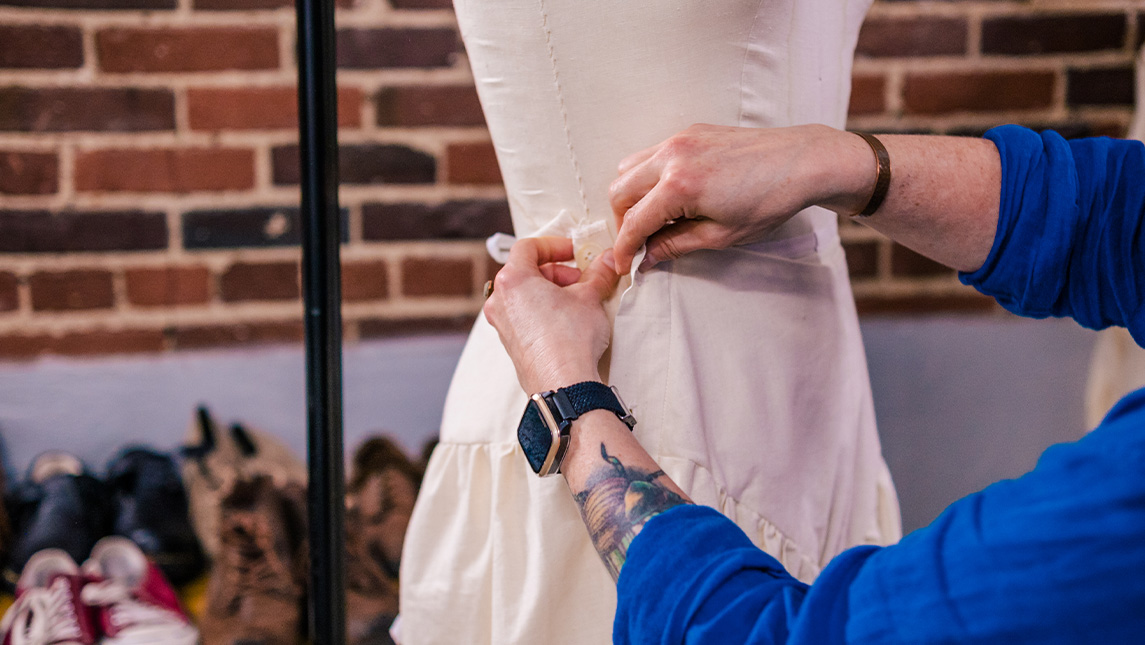
Bring your ideas to life on stage at UNCG
